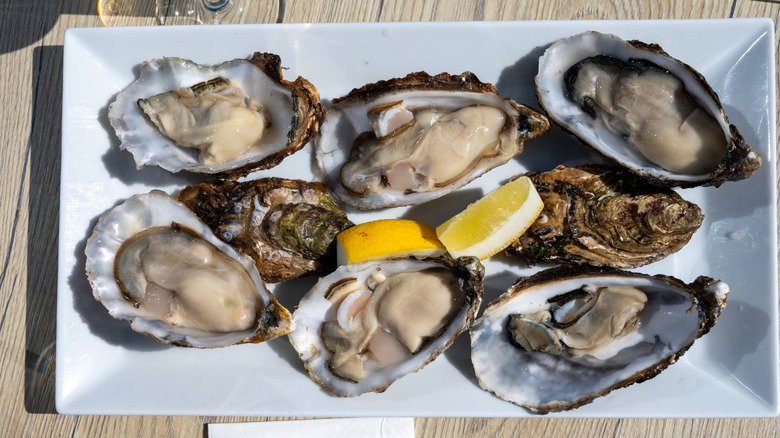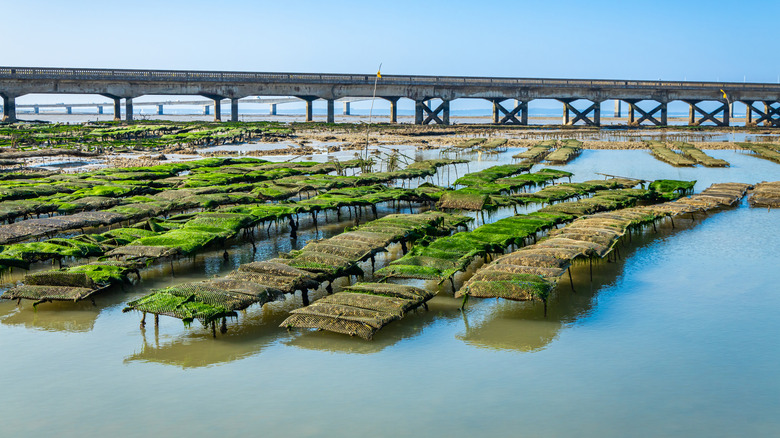Why Are Oysters So Expensive?
Believe it or not, oysters weren't always so expensive as they are now. In fact, they used to be so cheap that you could find them everywhere and slurp them up by the dozen without worrying about a penny. Sadly, getting all nostalgic just makes it even tougher to deal with the reality that they've gone from street snack to swanky starter, and ordering them feels more like treating yourself to a utility bill rather than seafood. When people think oysters nowadays, they're probably pairing them with champagne for a special occasion. So what changed, and why does a plate of something so small suddenly come with such a big price tag?
It's not just about popularity or trendiness, though both play a role. The price of oysters has been climbing for a while, and the reasons are pretty layered. Oysters are no longer pulled from the sea in massive quantities like they once were. Many of today's oysters are farm-raised, and that process takes time, care, and money, all of which drives up cost.
There's also a logistics issue: Oysters are highly perishable and need to be kept cold and alive right up until they hit your plate. Add in labor, transportation, environmental regulations, and rising inflation across the food industry, and suddenly that $3 or $4 per oyster starts to make a little more sense. It still hits your wallet all the same, but at least you understand the amount of work that goes into getting them ready to consume.
Oyster farming isn't cheap — or fast
The farming process itself is quite meticulous, and oysters have to be raised with careful attention to water quality, temperature, and the right conditions for growth. It takes about two to three years for an oyster to reach slurpable size, and in that time, farmers have to babysit them through every tide and season.
Because oysters are filter feeders, they rely on clean, nutrient-rich water to thrive. That means farmers need to operate in protected waters and follow strict environmental rules. They also have to regularly check the oysters, rotate them to ensure even growth, and use specialized equipment — all of which is expensive and labor-intensive.
Once the oysters are harvested, the work still isn't done, as they need to be cleaned, sorted, and kept alive during transport. That part of the process is tricky because oysters have a short shelf life (five to seven days) and must stay refrigerated and moist during the entire supply chain. That cold storage requirement adds to transportation expenses and limits how far they can be shipped without spoiling, especially for smaller producers.
Demand is up, but supply can't always keep up
To the dismay of people that love oysters, what was once considered a casual food has become a trendy, Instagram-worthy appetizer at wine bars, seafood spots, and upscale brunch places. And when demand goes up, so do prices — especially when supply is limited. But oyster farming can't scale up quickly to meet demand because of how long they take to grow.
On top of that, climate change is starting to affect oyster beds, especially in places where warming waters and extreme weather events impact growing conditions. Between storms, rising ocean temperatures, and diseases that can wipe out entire oyster populations, it's harder than ever to produce oysters at a steady, predictable rate.
So while it might feel frustrating to pay $20 or more for a dozen oysters as you're shucking away like a pro, you're not just paying for the shell and the slurp. You're paying for years of farming, careful environmental management, labor, transportation, and everything else it takes to bring a delicate, fresh product from the ocean to your table. It's a full-on production, and whether you like eating them raw, grilled, fried, or the myriad of other ways to prepare them, you're gonna have to pay.


